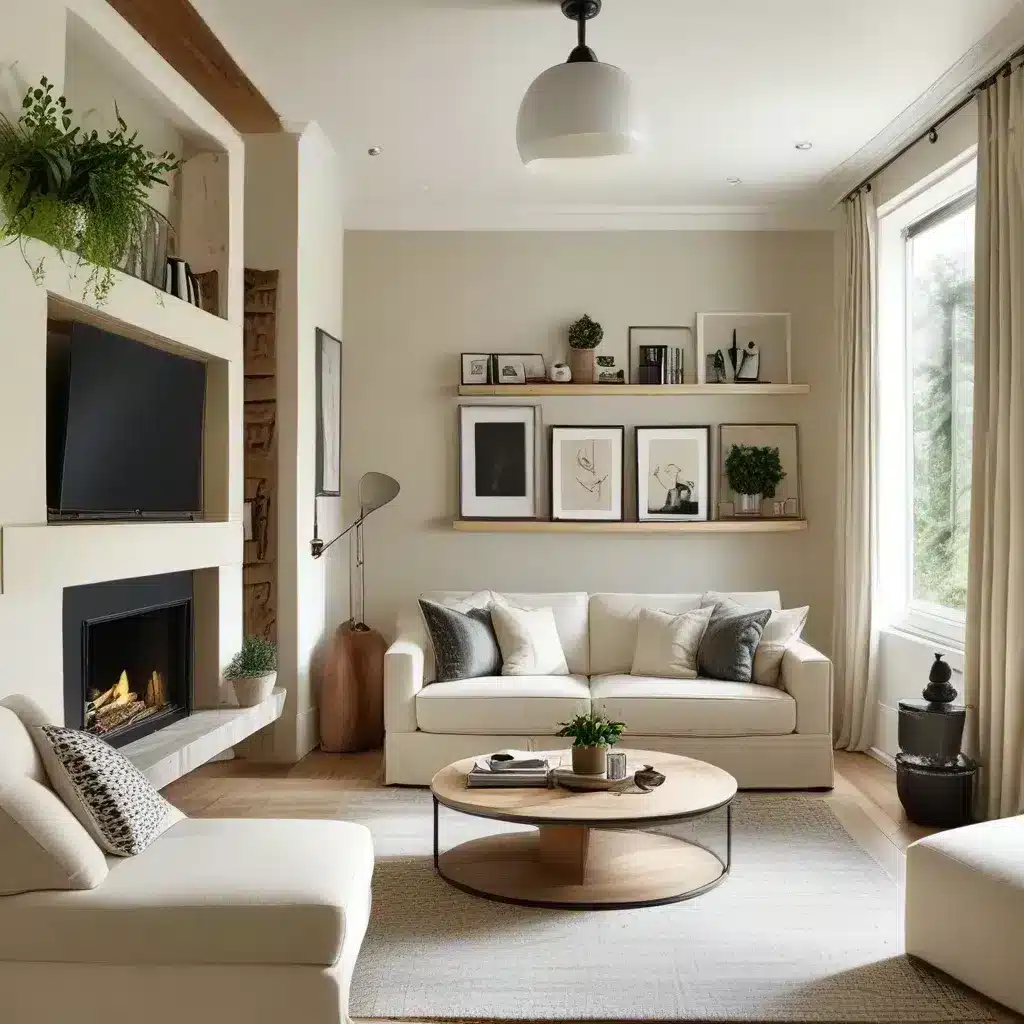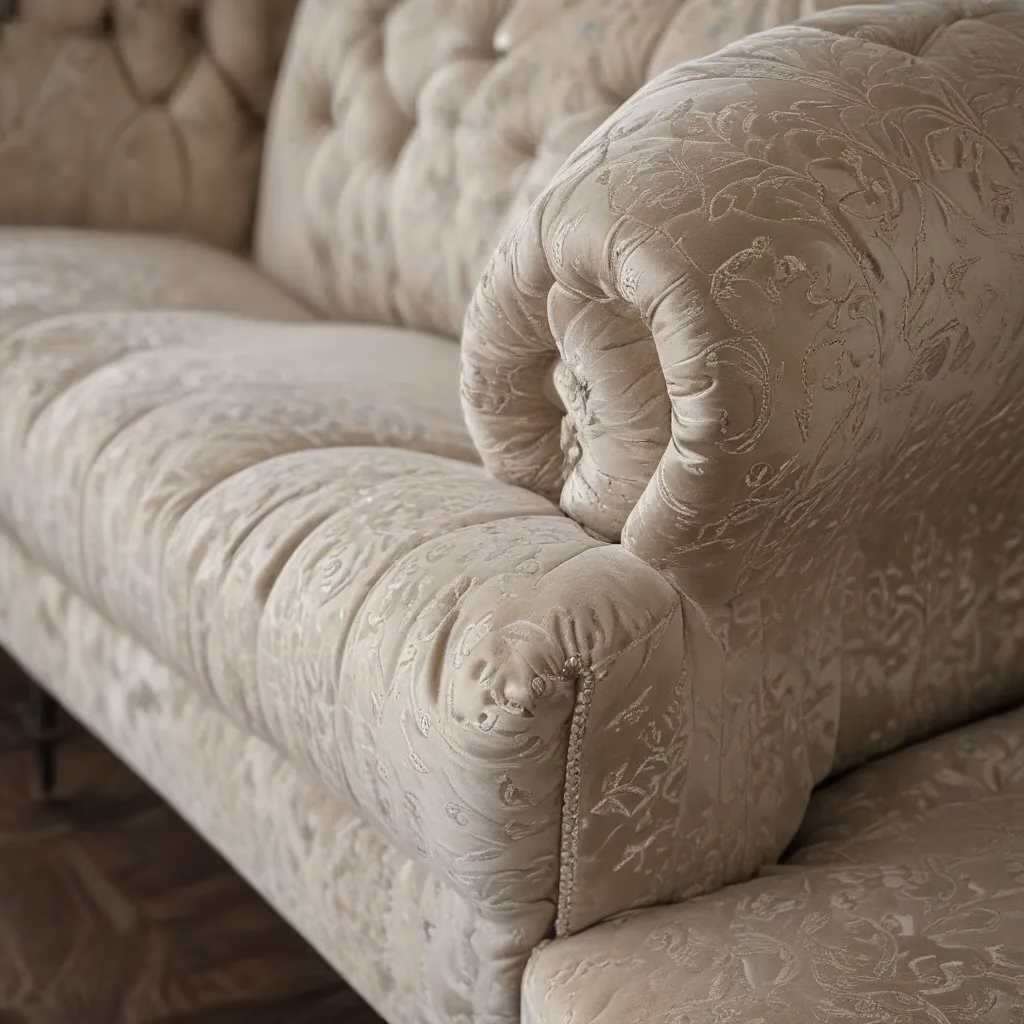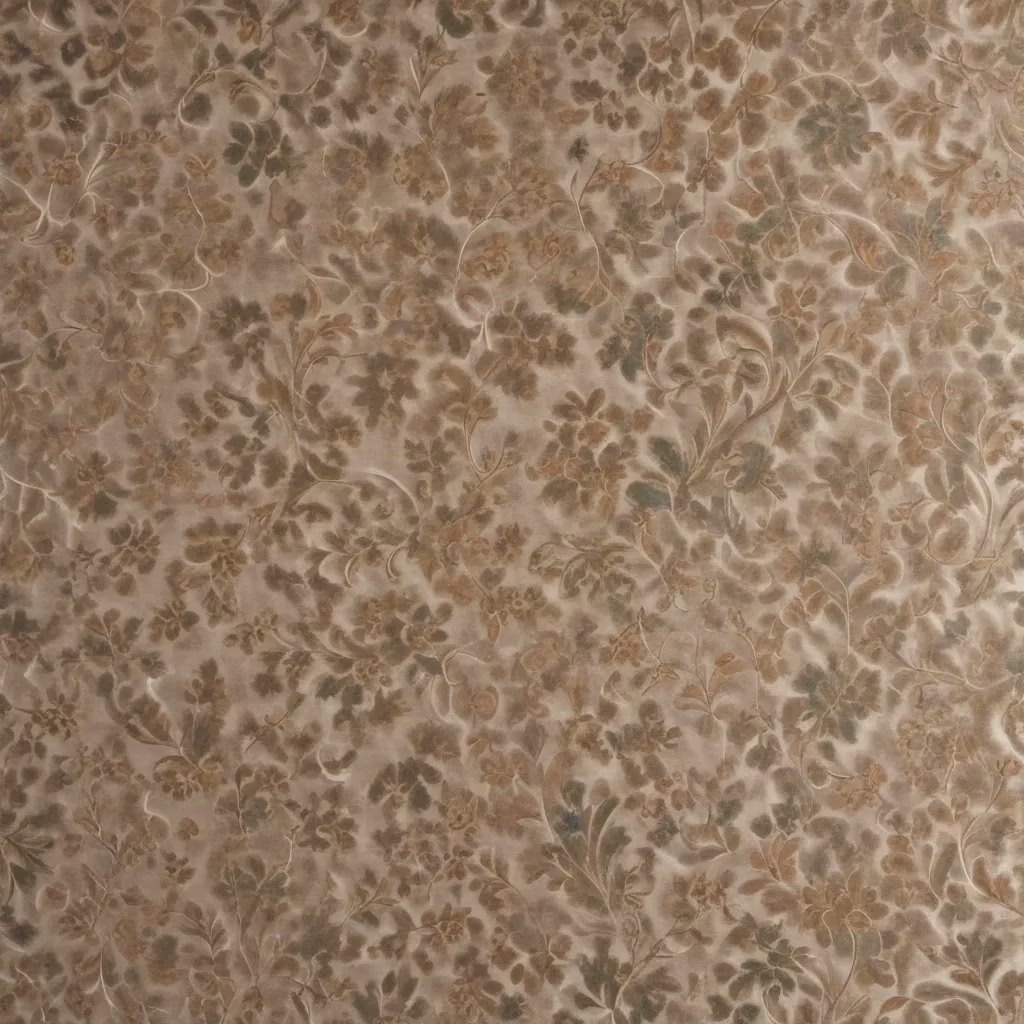Decor Tricks to Visually Enlarge Tight Living Rooms
Ah, the eternal struggle of the small-space dweller – making the most of limited square footage without sacrificing style or functionality. As someone who’s been there, done that (and bought the custom sofa to prove it), I’m here to let you in on a few secret weapons that can make your tight living room feel bigger than it actually is.
Paint the Walls (and Ceiling) with a Purpose
The old rule about painting your ceiling white and your walls a different color? Yeah, that ain’t gonna fly if your goal is to visually expand a room. According to design experts, you want to create an “envelope of space” by using the same color paint from your baseboards all the way up to the ceiling. This takes away those hard-defined planes that make a room feel closed-in.
Now, before you start picturing a plain, monotone box, hear me out. You don’t have to stick to a boring white or beige. In fact, some designers swear by using deeper, more dramatic hues like navy or charcoal to create the illusion of vastness. The theory is that when you don’t have a clear focal point or defined room boundaries, your mind starts to fill in the blanks, making the space feel larger than it is.
Of course, if you’re not ready to go full-on moody and mysterious, lighter, more reflective shades can also work wonders. The key is finding a color that will bounce the natural light around, making the room feel airier and more open. I personally love a nice soft sage or pale blue for this – it just radiates that “coastal chic” vibe, you know?
Hang Oversized Art (or Wallpaper!)
Picture this: you walk into a room and are immediately greeted by a sweeping landscape painting or a wall-to-wall mural of a serene seascape. Doesn’t that just make you feel like you’re in a grand, open space? Yeah, that’s the power of large-scale art and wallpaper.
According to the experts, these big, bold visual elements can actually “visually extend your space” by tricking the eye into thinking the room is much larger than it actually is. It’s all about that sense of depth and dimension, folks.
Now, I know what you’re thinking – “But won’t that just make the room feel even smaller?” Not if you do it right. The key is to stick to a simple, one- or two-color palette. Anything too busy or multi-hued is just going to add visual clutter and make the space feel more enclosed.
If you’re not ready to commit to a full-blown mural, try a large, framed landscape painting or a sprawling floral wallpaper. I recently did this in my own living room, and let me tell you, it makes the space feel infinitely more open and airy. Plus, it’s a great conversation starter when guests come over!
Reflect on This: Mirrors and Shiny Surfaces
Alright, let’s talk about the one decorating trick that’s been around since the dawn of time: mirrors. Yes, I know it’s a classic, but there’s a reason why interior designers keep coming back to this tried-and-true method. As the article says, mirrors can “double a room” by creating the illusion of more space.
But here’s the thing – mirrors aren’t the only reflective surfaces that can work their magic. Shiny tile, lacquered furniture, even a high-gloss ceiling can all help cast light around the room and make it feel more voluminous. Just make sure you’ve got some good lighting to give those reflective elements something to bounce off of.
Now, I know what you’re thinking – “Isn’t that going to make the room feel cold and sterile?” Not necessarily. The key is to balance those shiny, light-enhancing elements with some warm, cozy textures. Think velvet throw pillows, a plush area rug, and maybe even a vintage leather armchair. That way, you get the best of both worlds – a spacious, airy feel with a touch of inviting coziness.
Vertical Thinking: Maximizing Your Wall Space
When it comes to making a small living room look bigger, every inch of real estate counts. And that includes thinking vertically, my friends. According to the design experts, things like tall curtains, floor-to-ceiling built-ins, and soaring headboards can all create the illusion of a loftier, more expansive space.
Now, I know what you’re thinking – “But won’t all that vertical stuff just make the room feel even more cramped?” Not if you do it right. The key is to make sure your vertical elements have a light, airy feel to them. Opt for curtains that mount near the ceiling, but in a sheer, billowy fabric. Go for built-in shelves with clean, minimalist lines. And when it comes to that headboard, look for one with a sleek, tapered silhouette rather than a bulky, tufted one.
And speaking of furniture, that brings me to my next point…
Furniture Finesse: Scale and Proportion Are Key
When you’re working with a small living room, the furniture you choose can make or break the entire vibe. As the experts at Homes & Gardens say, “tiny room, tiny furniture” just ain’t gonna cut it. Instead, you’ve gotta be strategic.
Now, I know the instinct is to cram as much seating as possible into that limited space, but trust me – that’s a recipe for disaster. Instead, opt for larger, more substantial pieces that will make the room feel more proportional. A full-size sofa instead of a loveseat, for example, or an oversized armchair in place of a couple of small accent chairs.
And don’t forget about the little details, either. Things like visible furniture legs, glass or acrylic tabletops, and leggy, lightweight pieces can all help create the illusion of more space. Oh, and while we’re on the topic of furniture, let’s talk about placement…
Float Your Furniture (But Don’t Go Overboard)
Okay, hear me out on this one. The traditional way of pushing all your living room furniture up against the walls might seem like a space-saving hack, but design experts agree that it’s actually doing more harm than good.
Instead, try “floating” a piece or two – you know, positioning it away from the walls to create that all-important breathing room. Now, I know what you’re thinking – “But won’t that just make the room feel even more cluttered?” Not if you do it right. The key is to leave about 18 inches of space between your floating furniture and the other pieces in the room. That way, you get that airy, open feel without sacrificing functionality.
Just be careful not to go overboard, though. You still want to maintain a sense of cohesion and flow, so don’t go crazy with the floating furniture. Stick to one or two key pieces, like a low-profile sofa or a curved armchair, and let the rest of your layout follow a more traditional arrangement.
Uncover Those Views (and Bring the Outdoors In)
Alright, let’s talk about something that’s often overlooked in the quest for a bigger-looking living room: your windows. According to the experts, you want to do everything you can to capitalize on those natural light sources and “blur the line between outside and in.”
Now, I know what you’re thinking – “But won’t that make the room feel even more exposed?” Not if you do it right. Ditch the heavy, curtain-heavy window treatments and opt for something sheer and airy instead. Or, if you really want to make a statement, try going completely curtain-free and letting that gorgeous view take center stage.
And speaking of bringing the outdoors in, don’t be afraid to get a little plant-happy, either. Placing a bunch of lush, leafy greenery near your windows can create the illusion that your living room is just an extension of your garden or backyard. It’s a small touch, but it can make a big difference in how expansive the space feels.
The Wrap-Up: Putting It All Together
So there you have it, folks – a whole arsenal of tricks and tips to help make your tiny living room feel like a sprawling oasis. From strategic paint colors and oversized art to smart furniture placement and vertical thinking, the possibilities are endless when it comes to creating the illusion of more space.
And let’s not forget the power of great furniture – the cornerstone of any well-designed living room. Whether you opt for a sleek, low-profile sofa or a luxurious, tufted armchair, choosing the right pieces can make all the difference in how your space feels and functions.
So, what are you waiting for? It’s time to put on your interior designer hat and start transforming that cramped little living room into a sprawling, light-filled haven. Trust me, your friends and family are going to be seriously impressed when they walk in and think they’ve stumbled into a palatial mansion instead of your cozy little abode.




